The beauty of the household site plays a no less role than its practical importance, and in some cases even greater. Beautiful flowerbed with flowers can decorate even the most diverse landscape, constantly improving the mood to her owner. One of the most attractive colors on household flower beds is hydrangea. A beautiful flower, the number of varieties of which is calculated with dozens, is able to decorate the household plot with a large variety of colors and shapes.
Plant characteristics
Hydrangea is a decorative blooming shrub. Earlier, this type of plants attributed trees and lianas, however, they are currently counted among a separate family. The habitat of wild hydration is mainly focused in Asia and on the coast of the Pacific Ocean. These are mainly separate areas of China, Japan, the islands of the Kuril Ridge, Sakhalin. Some types of plants are found at the American continent. With its large natural variety of types and varieties of hydrangea, only some of them are cultivated.
The most interesting for practical cultivation are:
- Mountain hydrangea.
- Hydrangea.
- Hortensia ash.
- Hydrangea Pillya.
- Hydrangea Bretenneeter.
The remaining grades of hydrangea colors are not so common among the flower water, although they are quite attractive.
For most part, hydrangea is a deciduous plant with opposite, oval, simple leaves. Their size is quite impressive, along the edges they have a toothed form. The end of the sheet is pointed, and at all its length they can see the bodies. There are evergreen types of hydrangeas. They are preferably growing in countries with a warm climate.
Plant flowers have a rather interesting structure. Conditionally all the inflorescence of hydrangea can be divided into two groups:
- Obohyla shallow, they are also called fertile or flying.
- Miscellaneous or sterile, which differ 4-5 major petal cups.
Color coloring hydrangea diverse and depends on the variety of plants. Among the colors of the color prevail white and cream. At the beginning and end of flowering, inflorescences have a greenish tint. Almost all varieties of hydrangea sobs are pose, especially if they are under the sun.
Plant infloretia shape is different. Depending on the hydrangea variety, it may be flat, spherical, half-plane or pyramidal. All of them are united by the fact that the inflorescence itself is a shovel.
In some varieties of hydrangea flowers are chaotic, however, as a rule, the years are located in the center of the inflorescence, while the sterile surround them.
Hydrangea tree: varieties
This type of plant is one of the most popular among domestic gardeners. In most cases, the tree hydrangea is called "white bush hydrangea" or "white spherical".
This type of plant is a shrub whose height ranges from 1 to 3 meters. The birthplace of this variety is North America. The similarity of the climate caused that this plant was perfect in our latitudes. The inflorescences of the tree hydrangea have a spheroid or flat shape. Their diameter can reach 20 cm. The inflorescence is formed at the ends of annual shoots, first the flowers are green, as it becomes white or cream. In the inflorescences of tree-like hydrangeas, fluttering flowers prevail, and the amount of sterile is not great. There are varieties of this type of plant with completely sterile inflorescences.
The tree hydrangea is a rather unpretentious plant. It moves very well freezing and lack of sunlight, so it grows successfully and blooms in shady places. By the beginning of the winter frost, young shoots of the tree hydrangea do not have time to grow and die out, which strikes the shrub defined damage. However, after the spring trimming, the plant "comes to life" again and may be blooming already in the current year. In our latitudes, the tree hydrangea blooms in the middle of the summer (closer to the end of July), which makes it the first among the plants of this species. It continues to bloom it until late autumn.
The most common variety of tree hydrangea is "Sterilis". It is characterized by rather large semi-shaped inflorescences, which consist of small sterile flowers, the diameter of which does not exceed 1 cm.
Hydrangea Miscellaneous: varieties
The birthplace of this type of plant is Asia, namely Japan, China and the eastern regions of Russia (Kuriles, Sakhalin). In the wild, the shrub of the buggy hydrangea can reach a height of up to 5 meters. In garden conditions, this type of plant can be grown both in the form of a bush and in the form of a tree - one-baulous or multi. Due to the fact that brown one-year shoots of this species are quite quickly treated, unlike the tree of hydrangea, the plant perfectly tolerates cold.
The inflorescences of the buggy hydrangea are formed at the ends of annual shoots. The plant blooms quite abundantly than pleases the eyes of the owners of the naud. Although flower buds appear at the beginning of summer (in about mid-June), they bloom closer to mid-August. The form of inflorescence is predominantly pyramidal. At the beginning of the formation of bud, the flowers have predominantly green, which as it is dissolved in white or cream. Due to the effects of sunlight, the flowers of this species closer to the autumn acquire a pale pink, brick and even pale purple color. By the end of the flowering cycle, the flowers again acquire a weak-green color.
Like many types of hydrangeas, the blizzard is a rather unpretentious plant capable of growing successfully in places with a rigid climate. The most popular among domestic gardeners is the Grandflower grade. It is distinguished by rather large dense inflorescences, the length of which reaches 30 cm. Consist mainly from sterile colors. At the top of the inflorescence there are a small amount of fluttering flowers. In addition to the excellent appearance, the flowers of the Miscellaneous hydrangea emit an attractive honey fragrance for insects. That is why around the plant you can often observe a large accumulation of bees.
Hydrangea hydrangea: varieties
As for most species of this plant, the birthplace of this variety is China, Japan and the Far Eastern territory of Russia. In the wild, the bush of the plant can reach a height of up to 4 meters. Cultivated plants usually have a height of not more than 2 m. Some varieties of large hydrangea, which are adapted to growing in flower pots, have a height of not more than 0.6 m. Plant shoots of this type of green, herbaceous. They rust only a year after a growing. This causes a rather low frost resistance of the plant. Like most types of hydrangea, large-scale inflorescences are formed at the end of annual shoots. However, if there are practically all new shoots with inflorescences with compliance with inflorescences, then these species have only those that have grown out of the upper kidneys of last year's shoots.
The shape and coloring of the inflorescences of large-scale hydrangeas is diverse. The Japanese variety of culture has umbrella municipal inflorescences, while changing hydrangea is a semi-shape.
A feature of the last species of the plant is an unstable color, which depends on the soil composition on which the bush grows. If it has a conventional balanced composition of minerals, the plant has a pink inflorescences. On acidic soils with the inclusions of aluminum and iron ions, the color of the inflorescence can be blue.
Cherry Hydrangea
This type of plant differs from the previous ones, which is a curious Lian. In the wild, and it grows in China, Japan, on smoking and Sakhalin, the plant can reach lengths of 25 meters. Thanks to air roots, this plant can be perfectly attached to any type of support. It grows well and, getting up on the ground, however, in this case, the culture simply does not bloom. Inflorescences are loose umbrellas with a diameter of up to 25 cm. Pinkish, white and green or lilac shades. The plant is distinguished by medium frost resistance. Young shoots of cherry hortensia are quite poorly tolerance, so they are better removed from the support for wintering under the snow cover. Adults can be successfully recovered even after junk frost.
Dressing or divergent hydrangea
Similar name This type of plant received due to its sheet. The fact is that one of his sides is much brighter than the other and has the downcoming. Among the varieties of this species are the most common brenchedder hydrangea. This variety is distinguished by durable shoots that are quickly treated, which makes it possible to calmly carry even severe frosts. Leaves of the culture of the elongated form. Inflorescences - Kalinovoid, like most types of hydrangeas, are formed at the ends of the 18th shoots.
At the beginning of flowering, inflorescences are white, after a certain time, they begin to darken. The middle of the inflorescence of the Hydrangea Bretennister has a more convex form. Even after the end of flowering, the inflorescence does not disappear from escape, but continues to hang on it in the raised form. Due to this, this type of plant is often used to compile an Ikebane, dry bouquets or herbaria. Like many types of plants, the hortensia of the Bretennister is not good and successfully grows in shady places.

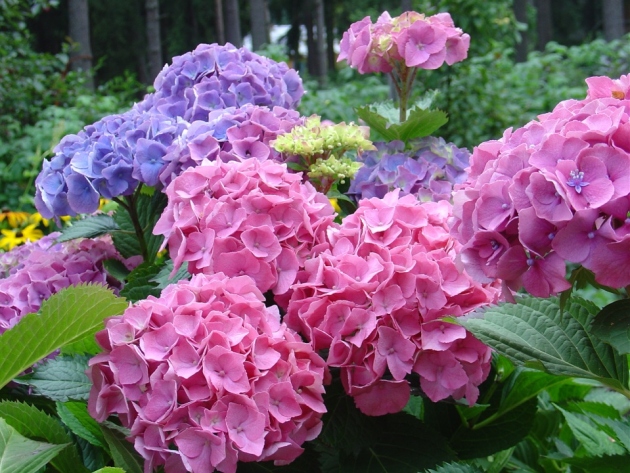
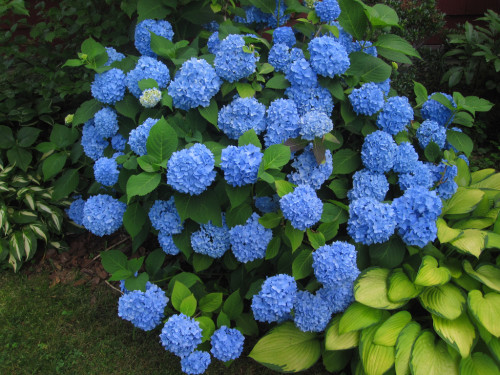
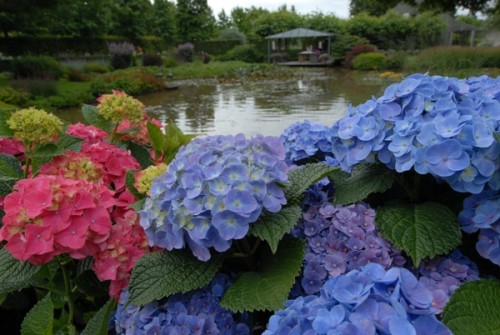
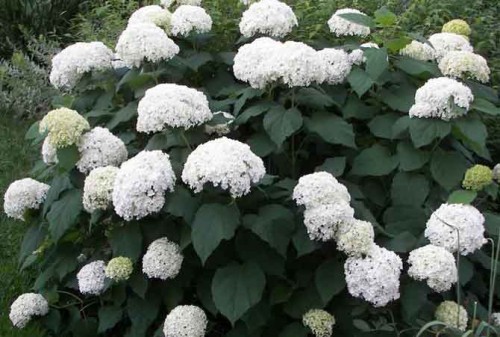
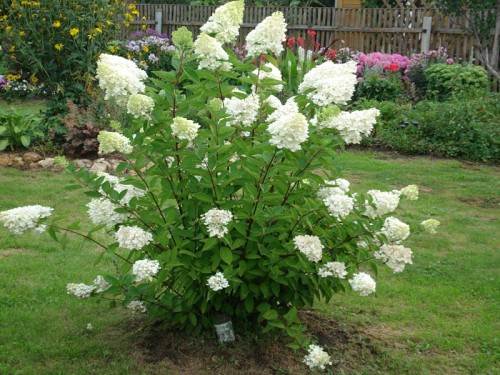
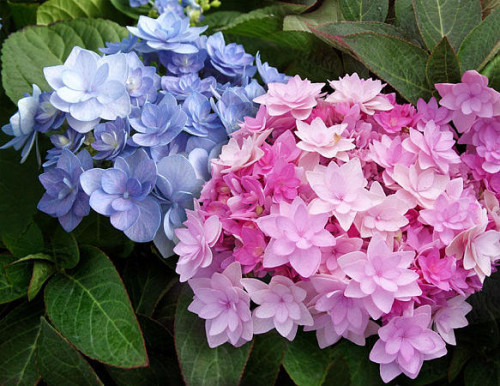
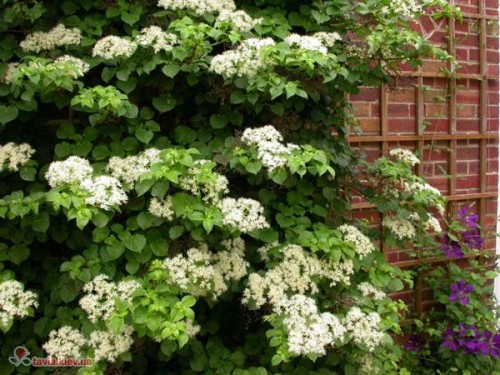
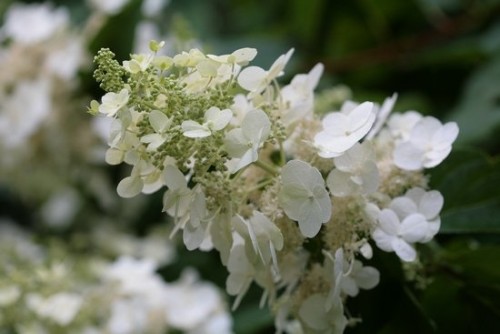












 Start a discussion ...
Start a discussion ...